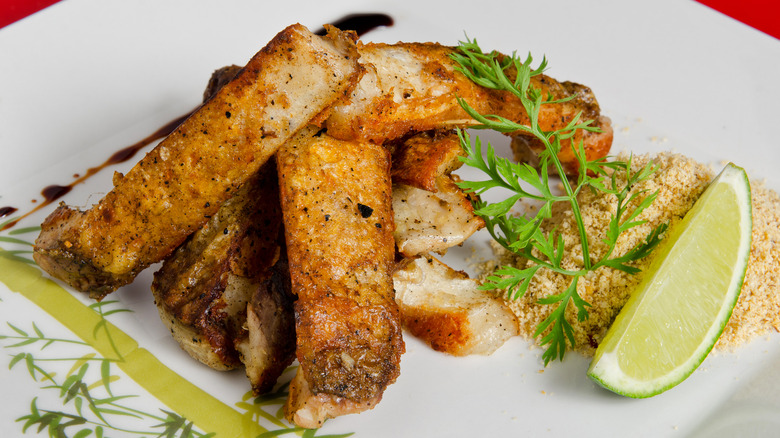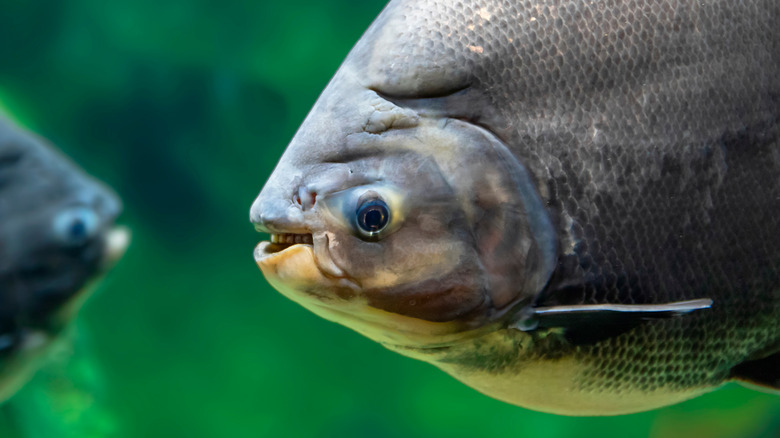The Fish Ribs You've Probably Never Eaten
Ribs engage all five senses in a way that few other foods are able to. There's the smoky scent, the savory flavor, the sticky feeling on your fingers and teeth, and the sound of silence as everyone at the table stuffs their face. When it comes to sight, ribs are less graceful, marking their territory by staining your face, hands, and all too often, your clothing. If you are a pescatarian that has ever passed by a BBQ restaurant and thought, "I wish I could get in on this dirty shirt action," you're in luck. Fish ribs may have a low profile in America, but they are very much a thing, and very, very delicious.
Fish ribs don't appear on many menus, but they play important roles in regional cuisines worldwide. In Japan, tuna ribs are typically eaten raw, a dish known as "maguro nakaochi." They are served by the slab, with the ribs still connected to the spine, and diners scoop the meat out from between the bones. In Arkansas, Buffalo ribs do not, as you might expect, come from buffalo, but rather from the buffalo fish, one of the largest freshwater fish in North America, according to the scientific journal Nature. Arkansans typically serve the ribs breaded and fried. But perhaps the most notable entry in the fish rib culinary playbook, and the one most reminiscent of the ribs at your favorite barbecue spot, is the pacu.
Pacu are freshwater fish related to piranhas
Found in the rivers of tropical South America, pacu can reach three feet in length and weigh as much as 44 pounds, according to National Geographic. There's a lot of meat on those bones. Theodore Roosevelt, the former president, was a self-professed fan. After his presidency ended, Roosevelt led an expedition through the Amazon Basin, where he first sampled pacu. In his account of the journey, "Through the Brazillian Wilderness," he called pacu a "good size, deep-bodied fish," and praised it as "delicious eating."
Don't let its relationship to the piranha concern you. Pacu are strictly vegetarian, per National Geographic. Their teeth aren't sharp — they are something much weirder. Pacu teeth look like a miniature version of our human dentition. While it isn't easy to find pacu ribs in the U.S. at this point, that could easily change in the future, as the dish is growing in popularity.
La Pulperia, the New York vessel of Argentinian chef Carlos Barroz, made a splash when it opened near Times Square, serving grilled pacu ribs coated with sticky orange-chipotle barbecue sauce (via Gothamist). The dish is no longer listed on their menu, but it might be returning soon, and popping up at even more American eateries since National Geographic reports that pacu have invaded U.S. waters.

